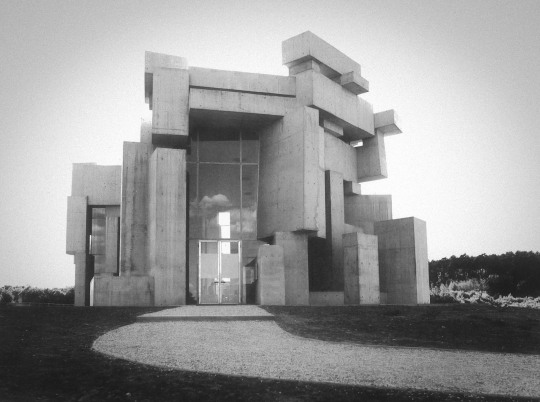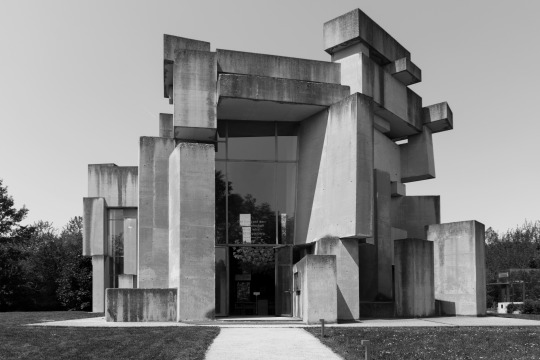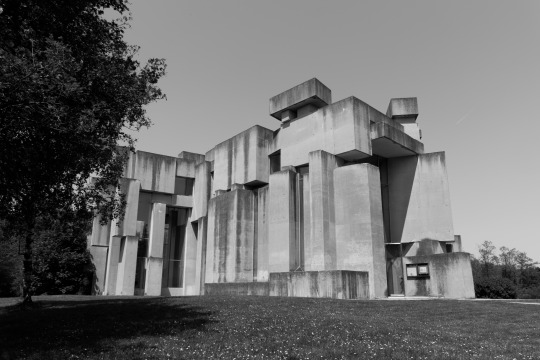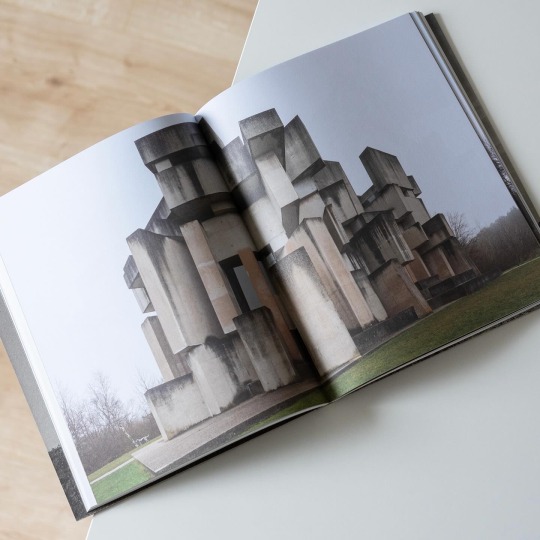#fritz wotruba
Explore tagged Tumblr posts
Text

Wotruba Church (1974-76) in Vienna, Austria, by Fritz Wotruba & Fritz Gerhard Mayr
#1970s#church#concrete#brutalism#brutalist#architecture#austria#vienna#fritz wotruba#fritz gerhard mayr
631 notes
·
View notes
Text

Church of the Most Holy Trinity, better known as the Wotruba Church, in Vienna, Austria, built 1974-1976, designed by sculptor Fritz Wotruba.
299 notes
·
View notes
Text





Wotrubakirche es una iglesia brutalista católica (que frase más bonita: brutalista católica) en Viena. Basada en un diseño del escultor Fritz Wotruba y el arquitecto Gerhard Mayr.
#Wotrubakirche#Viena#Fritz Wotruba#Gerhard Mayr.#brutalism#brutalismo#arquitectura#architecture#osterreich#austria
7 notes
·
View notes
Text

Kirche Zur Heiligsten Dreifaltigkeit (Church of the Most Holy Trinity), also known as Wotruba Church, by Fritz Wotruba and Fritz Gerhard Mayr (1974-1976).
Vienna, Austria.
© Roberto Conte (2022)
#architecture#architettura#architecturephotography#architektur#brutalism#brutalist#brutalismo#wotrubakirche
291 notes
·
View notes
Photo




Vienna - Wotruba Church (1974-1976, Fritz Wotruba)
120 notes
·
View notes
Text


Marino Marini (IT, Pistoia, February 27, 1901 - 1980, Viareggio)
Marini’s studio in Tenero, Switzerland. Photo by Fritz Wotruba, c. 1944. Courtesy Archivio Fotografico of the Fondazione Marino Marini, Pistoia.
Fritz Wotruba in Marino Marini’s atelier in Tenero-Locarno, Switzerland (from left to right: Wotruba, Marini, Marian Wotruba, and Marina Marini), c. 1943. Belvedere Wien, Dauerleihgabe der Fritz Wotruba Privatstiftung © Fritz Wotruba Privatstiftung, Vienna.
Marino Marini and his Swiss-born wife Mercedes Pedrazzini (1913–2008), better known as Marina, took refuge between 1942 and 1945 in Tenero-Locarno, Switzerland, to escape the Allied bombing raids on Milan [stopping briefly in Merate and Blevio, on Lake Como]
There, one of the most important yet little studied periods of his career unfolded, marking a significant turn in his artistic, ideological, and sociopolitical identity...
“A Nordic Mystery”: Insights into Marino Marini’s Sojourn in Switzerland During World War II
Nicol Maria Mocchi [paper author]
Marino Marini, Issue 5, May 2021 [Italian Modern Art Journal]
https://italianmodernart-new.kudos.nyc/journal/issues/marino-marini/
https://italianmodernart-new.kudos.nyc/journal/articles/a-nordic-mystery-insights-into-marino-marinis-sojourn-in-switzerland-during-world-war-ii/
3 notes
·
View notes
Text

Wotruba Church, by Fritz Wotruba and Fritz Gerhard Mayr (1974-1976). Vienna, Austria. Roberto Conte (2022)
5 notes
·
View notes
Text








The Church of the Most Holy Trinity, commonly known as the Wotruba Church, by Fritz Wotruba and Fritz G Mayr.
2 notes
·
View notes
Text

Squatting Figure (bronze - 1950 - 1951) by Fritz Wotruba (Austria 1907 - 1975)
7 notes
·
View notes
Text


Almost 50 years after its consecration Fritz Wotruba’s Church of the Holy Trinity in Vienna still remains one of the most fascinating church buildings of the 20th century. Made up of 152 individually cast concrete blocks it is a puzzling structure oscillating between architecture and sculpture, the open and the closed. In 2021/22 the Belvedere21 in Vienna with „Wotruba. Himmelwärts - Die Kirche auf dem Georgenberg“ dedicated an entire exhibition to the building, its creator and the conflictual genesis of it. It was accompanied by the present and highly insightful catalogue published by Verlag der Buchhandlung Walther und Franz König that on the one hand recounts the protracted and conflict-laden history of the church but on the other hand also locates it within postwar church architecture and Wotruba’s oeuvre. Within the latter it marks a high point that crowns a development towards dissolving the figure in an architectural form and more than a decade of continued dedication. Sadly Wotruba didn’t see the completion of the church as he untimely died in 1975. Besides a highly insightful exegesis of the church the catalogue also contains a wealth of drawings and contemporary photographs that document the coming to life of the building on site and in the artist’s imagination, a deeply fascinating process that nonetheless was very critically and at times even hostilely received by both the public and the expert audience. The waves have calmed over the past four and a half decades and Wotruba’s church now ranks among the relevant sites to see in Vienna, a development that the Belvedere’s exhibition will further contribute to as it deepens the understanding of and hopefully also the love for this unique church.
55 notes
·
View notes
Text

Church of the Most Holy Trinity, aka the Wotruba Church, in Vienna, Austria, built 1974-1976, designed by sculptor Fritz Wotruba.
111 notes
·
View notes
Text


Wotruba Church (1974-76) in Vienna, Austria by Fritz Wotruba & Fritz Gerhard Mayr
0 notes
Text
Kitchen Zur Heiligsten Dreifaltigkeit:
"WOTRUBA CHURCH"
Vienna, Austria (1974 - 1976):
Sculptor: Fritz Woltruba
Architect: Fritz Gerhard Mary



1 note
·
View note
Text
For Sunday Mass, we went to Wotrubakirche (or Church of the Holy Trinity). This Catholic Church is in the brutalist style of architecture, designed by an Austrian sculptor named Fritz Wotruba. It was built between 1974-1976 from 152 different size concrete blocks. There is no stained class in the church, only clear glass windows. The crucifix is cast from bronze. The church stands on the site of old Nazi barracks. Many think it looks like Stonehenge. I thought it was quite unique.




0 notes


